On 25 May, brass bands from all over the country will descend on Saddleworth and Tameside for the annual Whit Friday brass band contests.
In honour of this long-running northern tradition, I wanted to celebrate images of brass banding in the archives at the National Science and Media Museum. Not only is the museum located in the heart of brass band country—the world-renowned Black Dyke Band, and other fantastic bands, are based in and around Bradford—but we also hold the photographic archive of a paper that frequently championed this popular British pastime.
The Daily Herald Archive contains photographs taken between 1912 and 1964, and the accompanying articles can be accessed via the British Newspaper Archive. Given the Daily Herald’s links with the labour movement, it is unsurprising that the paper not only documented the activities of brass bands, but also sponsored a series of brass band contests, including, for a time, the Nationals, which have been held since 1900. You can see the impressive trophy that once bore the paper’s name in the photograph below:
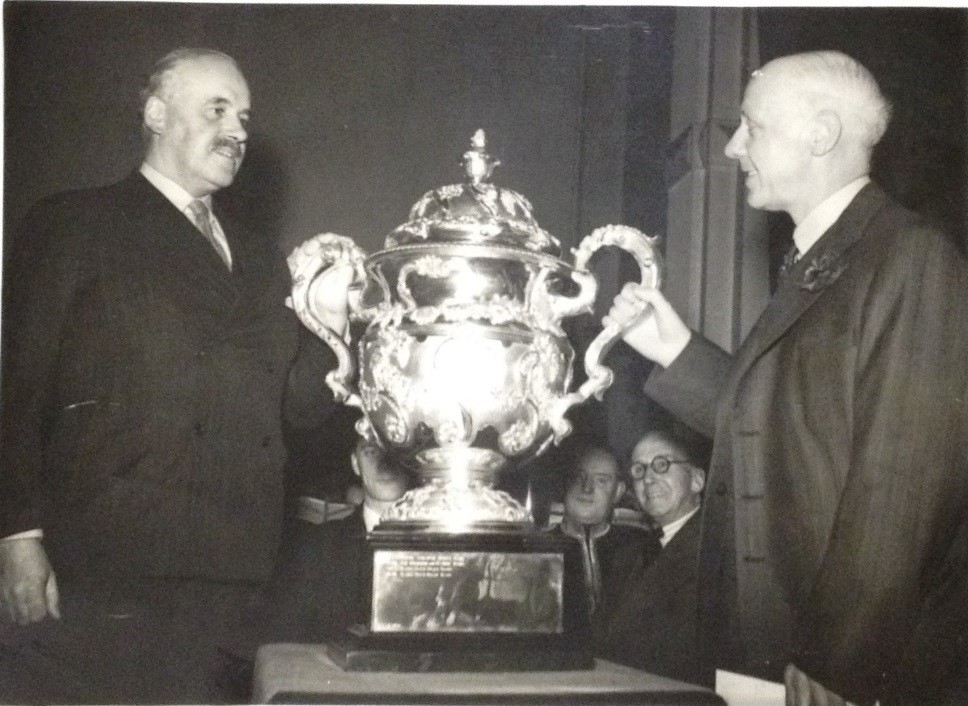
It is pictured here with Bradford’s Black Dyke Band, who were frequently crowned champions at the contest and have gone on to be one of the top bands not only in the UK, but also internationally. The man receiving the trophy, Captain R.A.C. Foster, is a relative of John Foster, the man whose Black Dyke Mill gave the band its name—you can read more about the story behind the photograph at the Bradford’s National Museum website.
In the early days, most band members were local textile workers, and many factories, mills, collieries and so on had their own brass bands, whose members had to work long hours to secure the time off they needed to compete and perform. The commitment made by band members is illustrated in the image below, which shows a pit band from Dodworth rehearsing.
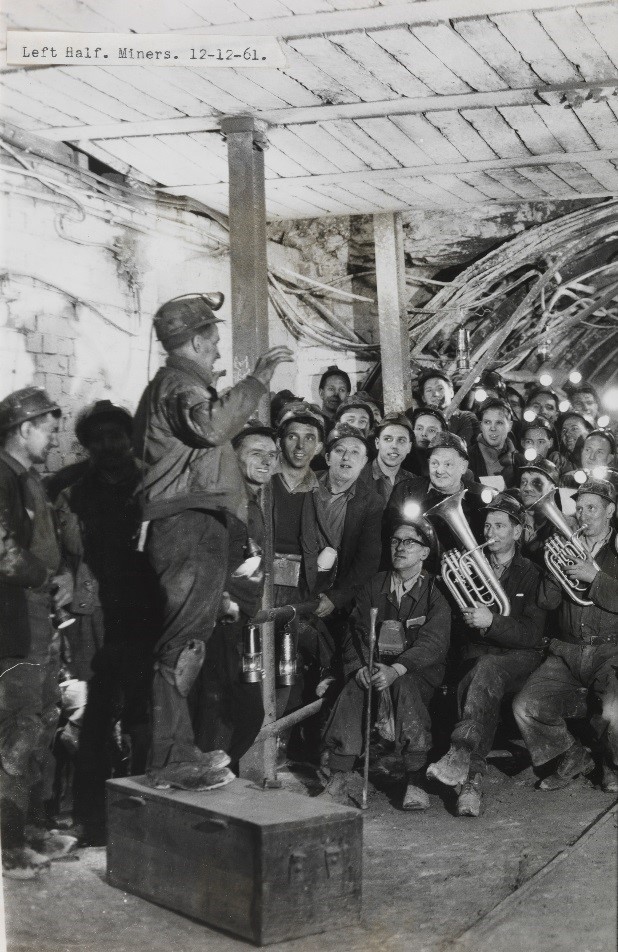
In another stunning image, Ollerton Colliery brass band lead a procession of miners at the Cinder Hill pit on 5 January 1947.
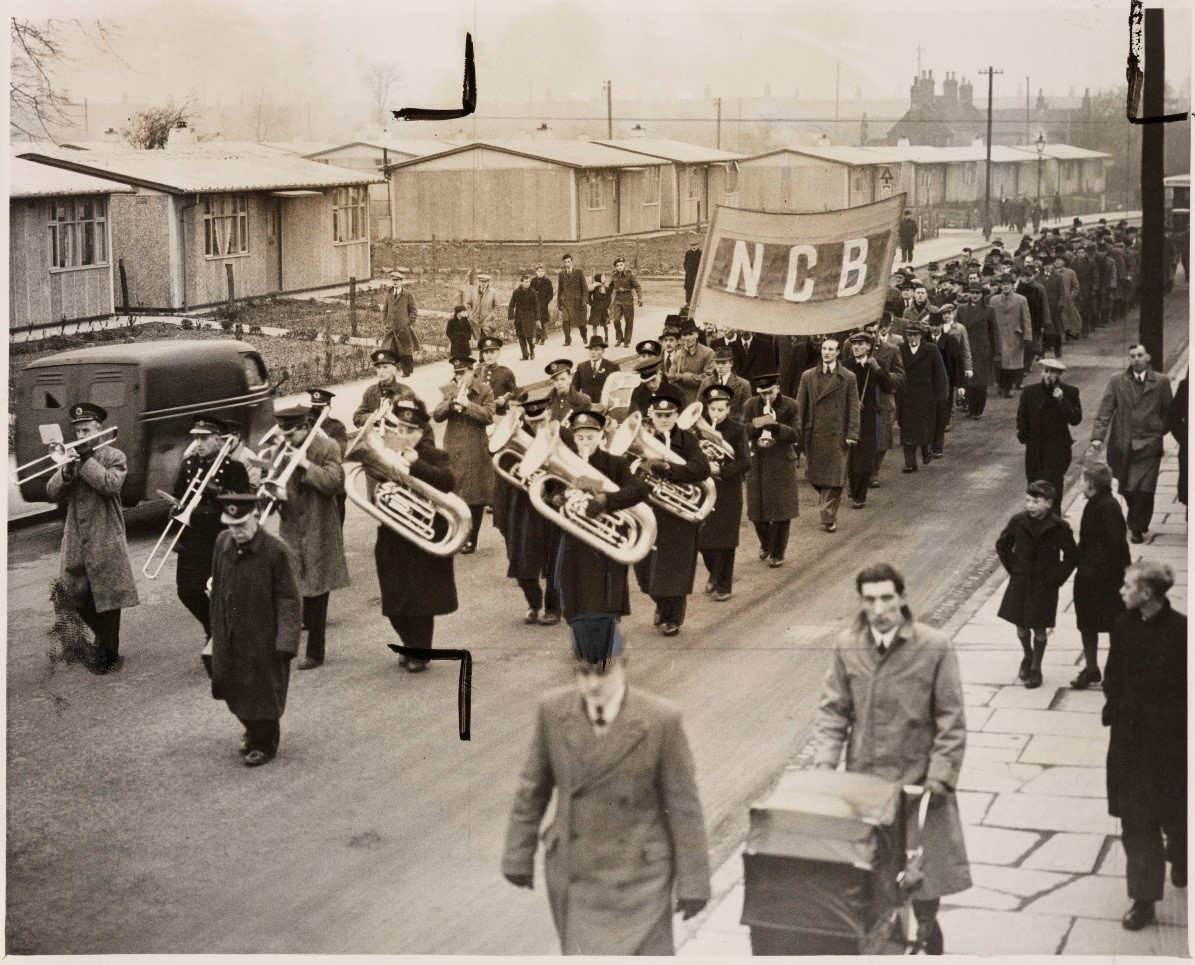
Bands offered workers opportunities to socialise and entertain. They were and continue to be at the heart of local communities. As a former brass bander myself I remember that playing carols in a freezing town square at Christmas was just as important as competing in contests, marching in parades and carnivals, travelling to play at bandstands in obscure places and performing in local Labour/Conservative clubs, church halls and community venues.
Here at the National Science and Media Museum you can see a lovely example of this in the film The Miners’ Picnic, which can be watched in our BFI Mediatheque. Narrated by one of the band, this film gives an insight into the importance of brass bands within their local communities.
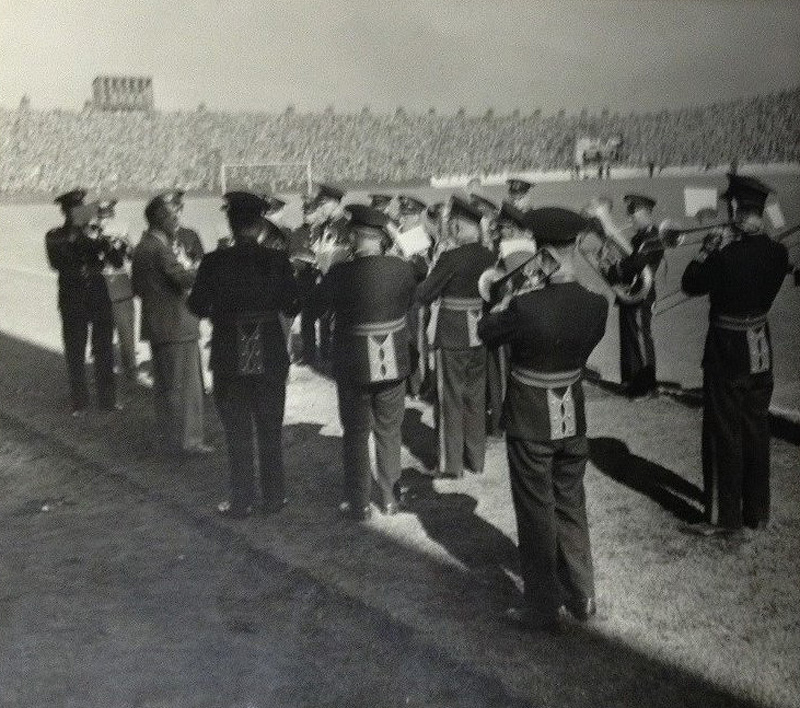
In the above image, an unnamed brass band performs for an impressively large crowd at a football match in Lancashire. Below, 17-year-old Marian Barlow, of Forest Row Silver Band, plays as guest soloist for Eastbourne Silver Band while on holiday in the seaside town. That’s real commitment!
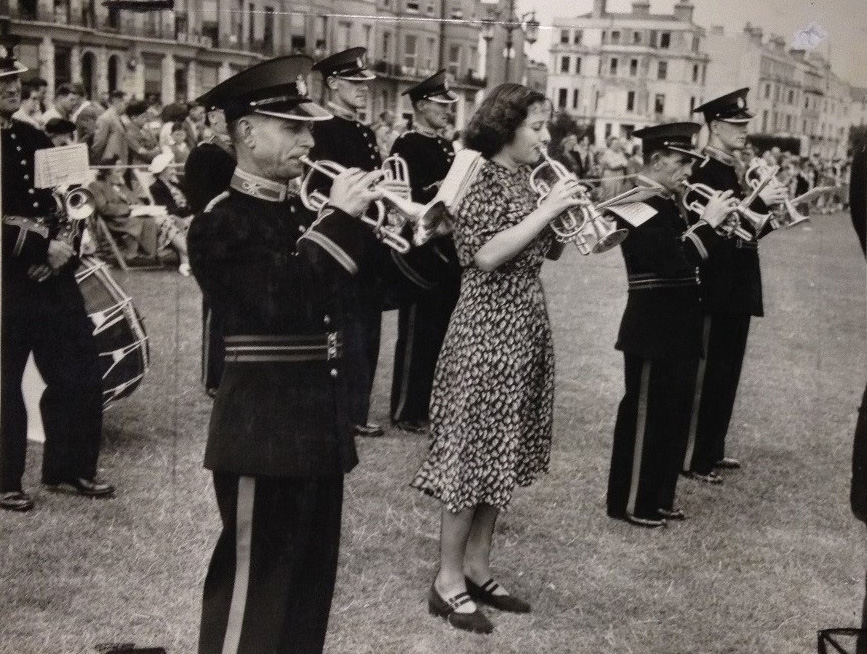
Something about this scene reminds me of the 1996 film Brassed Off, which also features a female soloist playing with an all-male band.
The Daily Herald also ran features on manufacturers, including the renowned Boosey and Hawkes, still a household name today. The company probably made many of the instruments featured in the images above, and the manufacturing process was one of great precision. Here one of their new instruments is tuned and tested in the workshop using a harmonium.
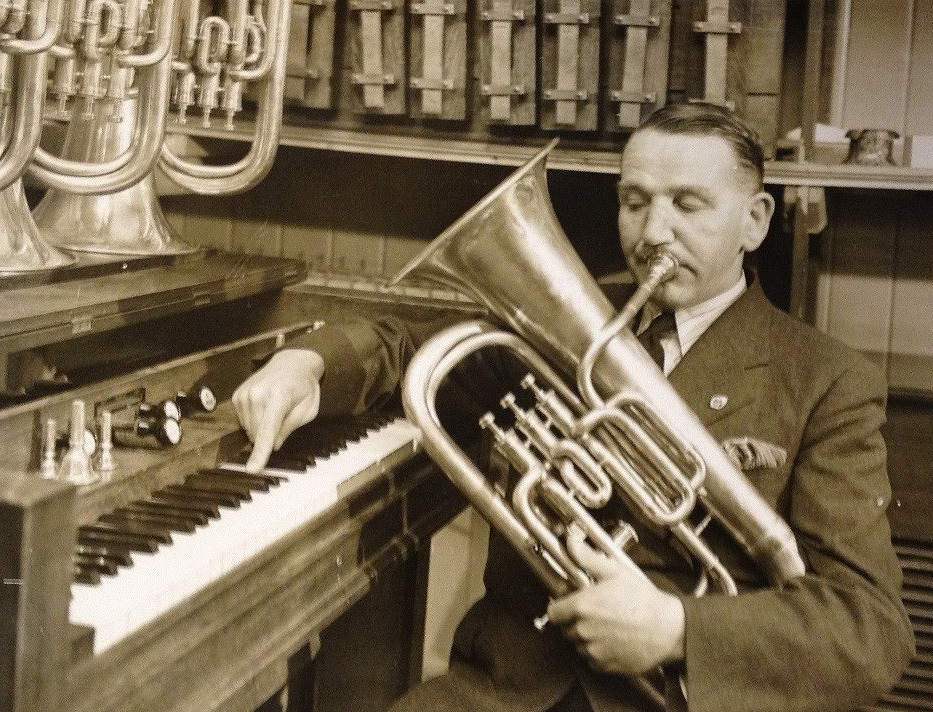
I was particularly taken with a series of images documenting massed band performances. Imagine the noise that the band below would have made!
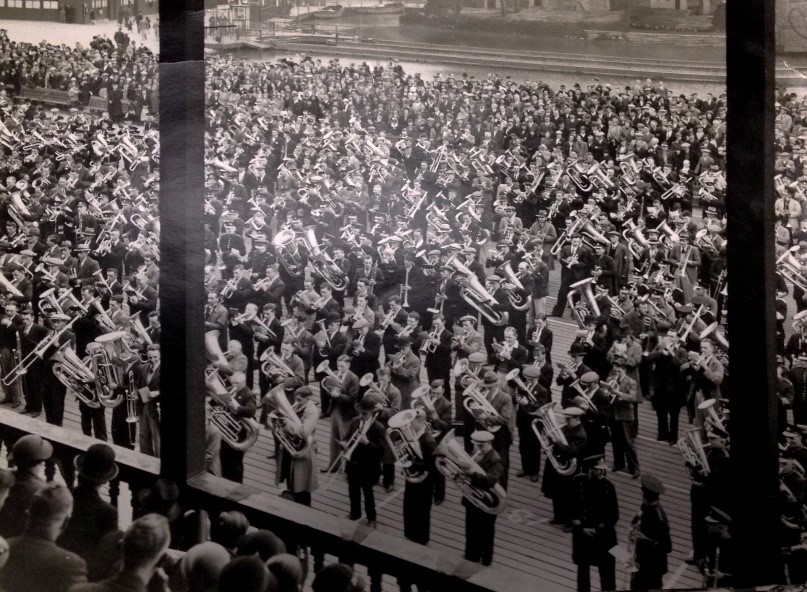
Of course there were and still are many sorts of brass band, and there are far too many wonderful images in our collection to feature them all here. We have Salvation Army band pictures, military bands, youth bands, legendary brass band conductor Harry Mortimer (who has a whole folder in the Daily Herald Archive) and bands are also featured in the work of Tony Ray-Jones, whose collection we hold at the museum.
As a former brass bander myself, I was thrilled to discover such a wonderful collection of images, and, although many brass bands retain their links to industry in name only, there remains a strong tradition of banding, contests and public performances.
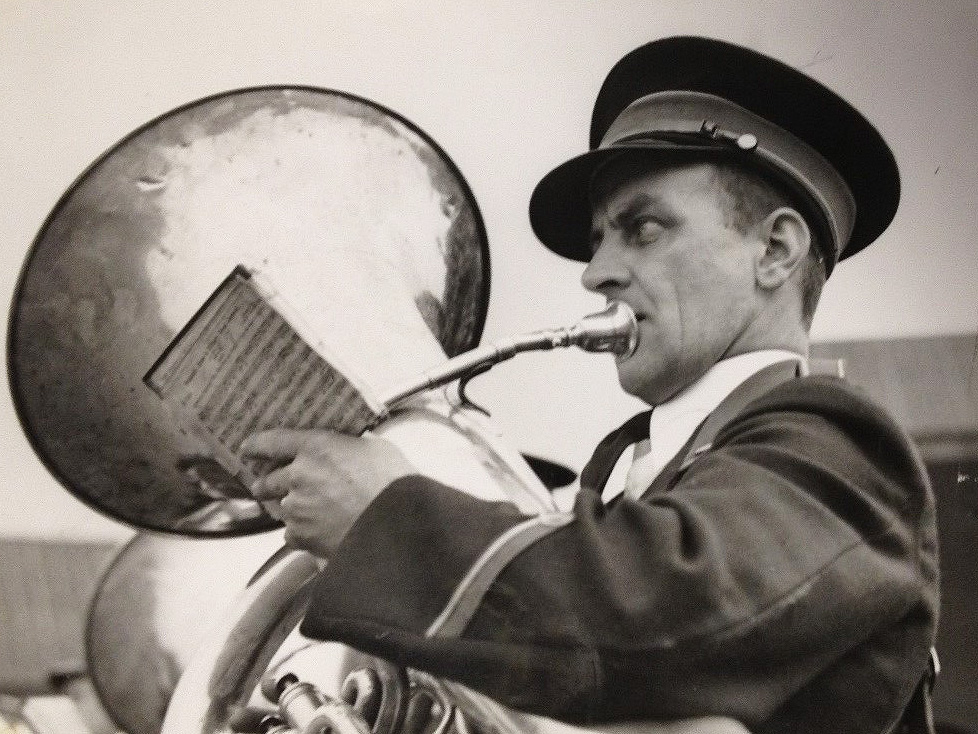
My personal favourite is a picture of a member of Tintwistle Brass Band, whose junior section I was a member of many years ago! Above you can see him—Jim Fletcher—playing his tuba in 1947.
To end I’d like to quote from a Daily Herald article about the 1948 National Brass Band Championships:
The brass band movement, which springs from the very soul of ordinary British folk, is a tremendous, spontaneous movement of musicians who devote their leisure to practice and rehearsal, and the giving of pleasure to others.
—Daily Herald, 1948
Good luck to all the bands competing at this year’s Whit Friday contests!
Most interesting.